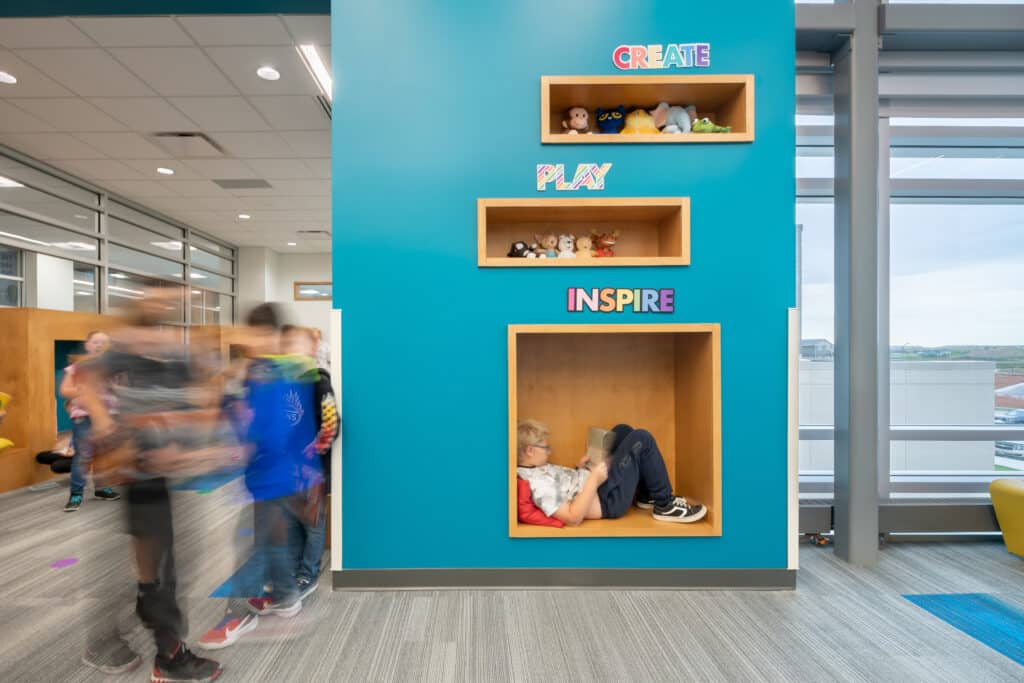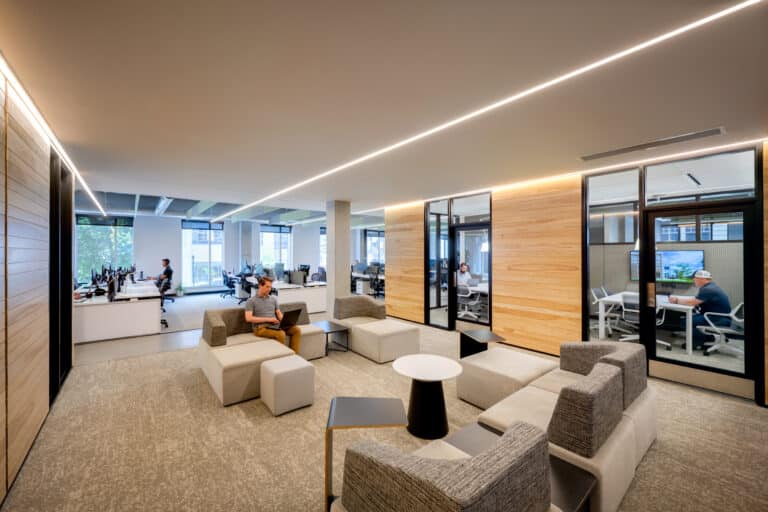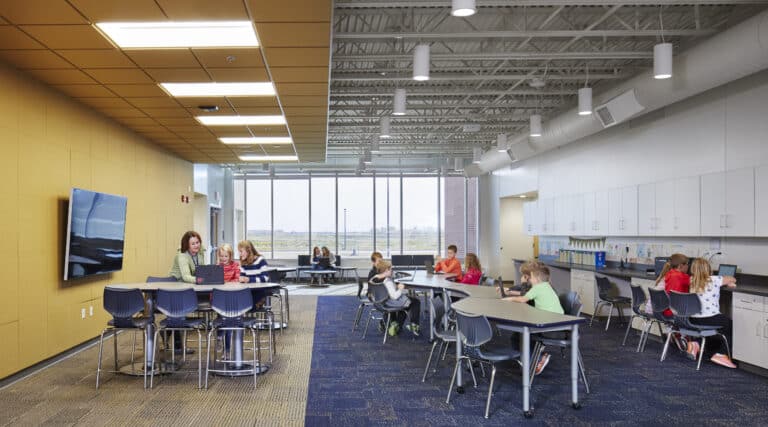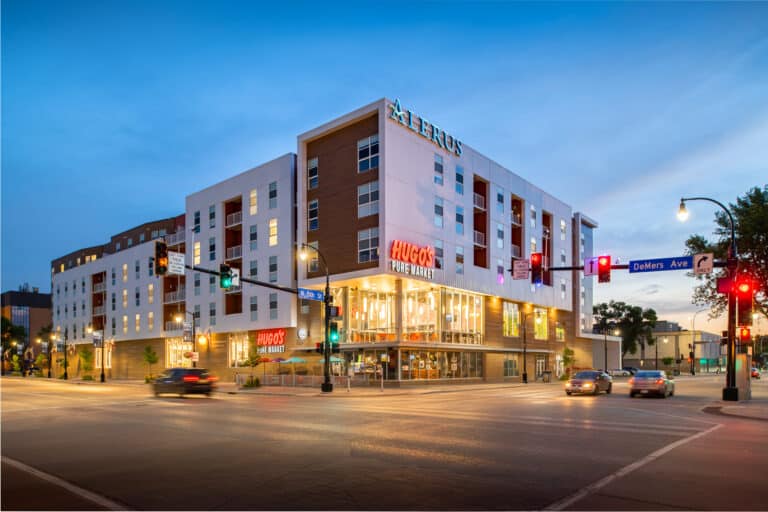Across the country, schools collectively spend billions of dollars on safety measures to create a safer school environment. These measures range from professional development training to camera systems, storm shelters, alert systems, and include an evolution of safety drills from duck and cover to active shooter.
Biology
The need to feel safe is baked into our biology; it’s a basic human need rooted in our quest for survival.
Safety is identified as a key component of Maslow’s hierarchy of needs, “a psychological theory about what drives human behavior and what makes humans feel fulfilled.” The first need in this theory is to meet a person’s physiological needs such as food, water, and shelter. The next level of need is ensuring that we are mentally and physically safe.
These base levels are hard-wired into our brains as a part of our survival instinct. When our safety is threatened, our survival response, often referred to as fight or flight, kicks in. This automatic physiological response ignites our sympathetic nervous system, and our body prepares us to either fight the threat or flee from it. Adrenaline is released, our heart rate increases, how we breathe changes, and our skin becomes pale or flushed. Our entire body and mind is now focused on dealing with the perceived threat.
As a result, when we feel unsafe, we are often easily distracted, struggle to focus, and we’re more likely to react in fear. To feel safe, many of us crave order, predictability, and a sense that we have control over our environment and our emotions.
Safety is not just an evolutionary need to survive, it is also critical to our growth and development throughout our life. Safety can look like survival, but it can also look like feeling secure in your emotions, finances, or relationships. These needs begin developing in early childhood, and the responses we develop during that time impact the rest of our life.
Safety in Schools
Threats at school come in different forms. There are everyday threats that occur, like bullying, name-calling, or physical attacks from other students or even staff, triggering students’ fight or flight response. Some students will studiously avoid spaces where they could be alone and vulnerable to these types of threats on their physical or mental safety.
Schools can also be targets of active threats. While rare at any particular school, they are still a cause for concern and generate fear. Staff, students, and parents want to know that thought has been given to how the school building and staff, and first responders will react to an active threat at their school.
When it comes to school safety and security, both types of threats need to be considered within the
building design.
Building & Site
When it comes to education, the building and the site are important components in meeting our need for shelter and safety.
This starts with the building code, which sets a baseline standard that is intent on keeping building occupants safe from harm. As architects, we are tasked with protecting the health, safety, and welfare of those who occupy the buildings we design, and the building code helps us do that. The building code establishes expectations for fire areas, exits, and travel distances that are set up to intuitively get occupants away from a threat and out of the building should the flight response kick in.
Creating fire areas for safety in school buildings has long been a part of the building code. Now designers are asking themselves how these fire compartments can be used to enhance safety and security for other types of threats.
By being strategic about where the fire area compartments are located, we can use them to compartmentalize the building during an active threat, restricting the movement of the threat and giving the occupants more time to flee.
Other building aspects mandated by the code can be used to help with threats as well. The addressable fire alarm system can be used to send out a warning to occupants, and the camera system can be used to locate the threat and pass that information along to the responders. Also, the same exiting system designed to get people out of the building in a fire or other emergency, can be used to vacate the building during an active threat.
However, the building code is just the beginning. Today’s best practices build upon the baseline that the code establishes to increase the level of safety in our schools. This includes a widely accepted best practice of integrated and layered protection — the belt and suspenders equivalent to addressing safety and security needs. Many schools implement lock down points, cameras, panic buttons, and communication devices to notify occupants and first responders. Creating layers of security best prepares you for threats that can happen from the front door to the classroom door.
While schools in the past put the offices in the center of the school to create more centralized access to the school operations, today’s schools recognize that a secure perimeter and tightly controlled visitor management are important aspects in better school security. A controlled, single point-of-entry for student, visitor, and evening entrances lets you know who is in your building. Adding transparency and longer sight lines at these entries allows occupants to see threats approaching with greater time to react, but also provides observation of interior spaces such as a central commons.
Toilet areas are another area where students often feel unsafe. In many schools, toilet areas are the one space where behavior cannot be observed. Most schools report that as much as 90% of their daily illicit behaviors occur in the toilet areas. A “home-like” design for toilet rooms, where the toilets are in individual rooms that are completely private physically and acoustically (just like home), allows handwashing and grooming to be moved out into public areas where they can be observed, and where cameras can be installed. This approach has been proven to greatly reduce the incidents of bad behaviors in the toileting areas, and to increase students’ feeling of safety and belonging.
The feeling of being safe extends to the site and exterior surroundings. Parent pick-up and drop-off, bus routing, and how the students get to the outdoor spaces safely are all considerations that will improve how a person feels when on campus.
How a district approaches safety and security is a fundamental aspect of how the building will be designed. Understanding the district philosophy in an event (hide/run, the official response, communication, etc.) all play a role in how a building can be designed and how occupants react to threats.
It is important that detailed conversations between the school and the architects take place during the building design, so that the building design and the schools philosophy, training and procedures are in alignment. When that happens, the building can be a critical component in keeping students and staff safe.
Belonging
Once someone’s physiological and safety needs are met, they can begin to satisfy other needs in Maslow’s hierarchy, such as feelings of belonging, esteem, and self-actualization. This comes in the form of a connection to others, making friends, establishing a sense of community, or feeling accepted. These interactions help us feel fulfilled and play an important role in our ability to feel safe in the spaces we occupy. School culture plays a critical role in supporting these connections and fostering a feeling of physical and emotional safety.
Jim Holbeck, retired superintendent in South Dakota, noted that throughout his time in education, “preventive measures are based mainly on how we treat others and how we help those who may have mental health issues or anger problems. Schools do this in many ways through the culture they establish, emphasizing the need for others to be treated as we would want to be treated, as part of the school’s curriculum.”
Physical practices put in place by the building code or best practices can only go so far. The building design, coupled with the educational delivery system chosen by the school, can also help. One way to foster belonging in the building is through murals, passive surveillance, and educating staff on what to look for regarding day-to-day safety needs. Creating an environment where students feel they belong reduces everyday incidents that threaten the feeling of safety, such as bullying, hazing, intimidation, fights, or vandalism.
Breaking a school down into learning communities of 150 students or less can also help foster connection and belonging in the building. This arrangement provides the opportunity to create a “school within a school,” where “everyone knows your name.” These smaller learning areas truly become communities for students, giving everyone a sense of familiarity and belonging.
This Century Education
Today, our approach to designing educational spaces aims to address the safety and the belonging needs of occupants. This Century Education design can be used as a tool to help students feel safer by creating environments that reduce illicit behavior and foster a more welcoming environment.
This Century Learning Environments are designed to allow for education to occur everywhere. With education becoming more project-based, this means creating flexible opportunities for students to work in and outside the classroom and still be observed. When the students and staff can be easily observed, illicit behaviors are reduced. When coupled with smaller learning communities, it also allows the members of the community to more easily watch out for each other.
It has been said that transparency translates to accountability. This is true of our educational environments as well. Working in a more transparent environment is a learned behavior. Distractions happen, but we have seen students and staff typically adjust in a matter of days. Some studies show that transparency actually reduces distractions and improves focus by giving occupants an opportunity to break focus, and then re-focus.
Conclusion
Providing a safe and comforting environment is key to providing a place where students can learn. Combining the preferred educational delivery and school culture with facilities designed to maximize those efforts is the best way to keep students safe and provide them with their best opportunity to thrive.





